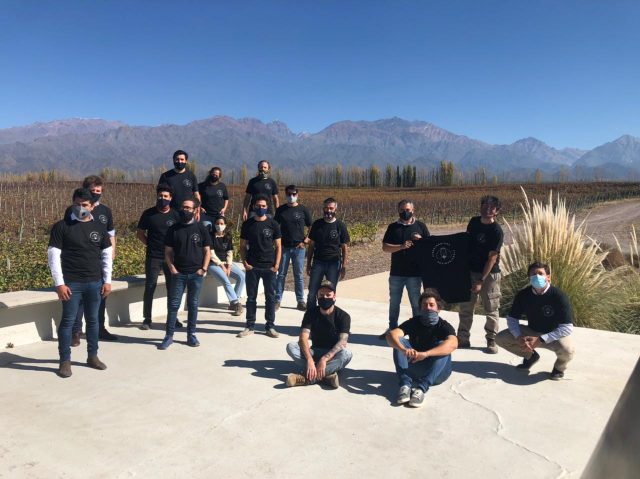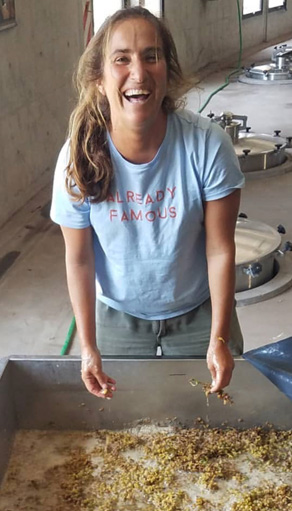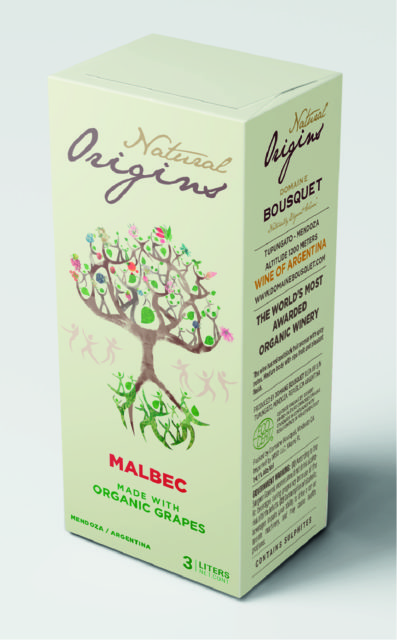Nature’s way: Organic winemaking in Argentina
Organic and biodynamic winemaking in Argentina was once the preserve of a small but passionate subset of producers catering to a niche market. Now, growing demand for sustainably-produced wines is fuelling a “revolution”, with producers big and small raising the bar for organic Argentine wine.
Argentina has one of the best climates in the world for organic and biodynamic winemaking. Not only does it boast Phylloxera-free vines, many centuries old, its reliable heat and minimal rainfall means that managing pests and disease organically is not only achievable but preferable in many cases.
Mendoza enjoys a continental climate and semi-arid desert conditions, with an average of just 220mm of rain a year. For comparison, Bordeaux receives an average of 851mm a year. The conditions are not uniform across all regions; Argentina is a vast, long and wide country. But its typically dry climate and altitude means that there is a natural inclination towards organic viticulture, one that producers can easily take advantage of.
Over the past decade vineyard certification has increased significantly. In 2005 there were just 273 hectares of vineyards certified organic across Argentina. In 2020 there were 7,312 hectares across 76 Argentine wineries – a 2,578% increase over 15 years. A further 432 hectares are certified biodynamic.

VinoDinámicos
This is according to VinoDinámicos, a non-profit alliance formed in 2018 between 10 producers in Mendoza with the aim of promoting and supporting sustainable viticulture across Argentina.
“The main challenge [in Mendoza] is not in the control of fungal diseases, but in the maintenance and improvement of the fertility and life of the soil,” explains Mauricio Castro, the group’s coordinator.
“Mendoza has a naturally dry climate and desert-like conditions, and due to that, the development of cryptogamic diseases is less than in other regions of the world. Regarding pests (insects), the diversity of pests in Mendoza is also lower than in other areas. This, while a benefit, does not mean that we cannot pay attention to it.”
Argentina’s biggest viticultural foe is the leaf-cutter ant, a pest that is unique to the American continent and capable of completely destroying a vine, and which the VinoDinámicos group has been studying for the past three years.
Current VinoDinámicos members are Alpamanta, Bodega Piedra Negra, Casa de Uco, Bodega Chakana, Domaine Bousquet, Ernesto Catena Vineyards, Escorihuela Gascón, Bodega Krontiras, SuperUco and Vinyes Ocults.

Chakana switched its focus to organics in 2011 and now manages 75 hectares of organic and biodynamic vineyards at its Nuno estate in Agrelo, Mendoza. Escorihuela Gascón, founded in 1884, produces an organic and biodynamic Malbec from its Parcel 6 Finca El Cepillo vineyard in the Uco Valley. While Bodega Krontiras has operated biodynamically since its inception in 2004 under the stewardship of agronomist Maricruz Antolin, a leading figure in the biodynamic winemaking movement.
“Our challenges and what we want to contribute to Argentina as a group include technical development, research, knowledge production and the diffusion of organic and biodynamic agriculture,” adds Castro.
International market driving demand for high-quality organic wine
Clearly sustainable and organic viticulture is good for the environment, and consumers are catching on too. Overall, global organic wine sales are expected to rise from a 2.8% share of world wine sales to 4% by 2024, according to research outlined by the IWSR last year. It’s a small segment, but significant against an otherwise dampened wine market hit by Covid, with concerns about the environment driving more interest in organic wines.
“As [international] markets ask for organic wines we are growing in this category,” explains Paz Levinson, Head Executive Sommelier for Groupe PIC of chef Anne-Sophie Pic. “At the same time now is the beginning of a new internal market: the Argentines are starting to ask for this kind of wines and they are more aware about sustainable practices.”
Partner Content
Simultaneously a rise in the quality of Argentine wine in general, driven by a focus on terroir and site selection, has helped elevate the credibility of organic wines too, resulting in an increasingly diverse selection of high-quality certified wines.
“In the beginning, organic wines were perceived as low-quality,” Castro acknowledges. “In some cases, the organic wines were entry level and in others they were artisan wines that were confused with ‘organic’. In the last 15 years, the new generation of winegrowers and oenologists have begun to focus on this way of production and to produce high-quality wines.”
Vinecol, in La Paz, Mendoza was among the first wineries to be certified organic in Argentina when it was founded in 1998. Today it manages 80 hectares of organic vineyards producing wines under its Los Medanos label, including a Cabernet Sauvignon, Torrontes and Tempranillo, as well as an Extra Brut sparkling wine.

Haarth Organic wines, in the southern province of San Rafael in Mendoza, manages 35 hectares of organically certified vineyards including Malbec, Cabernet Sauvignon, Bonarda, Syrah, Merlot, Chenin Blanc and Sémillon.
Notable biodynamic estates include Luna Austral Wines in the San Carlos sub-region of the Uco Valley, and the Alpamanta Estate in the Ugarteche subregion of Mendoza.
In northern Argentina is the historic Bodega Nanni in Cafayate, Salta, which has worked with organic viticulture since the 80’s, and is also one of Argentina’s oldest wineries having been founded in 1887. They achieved organic certification in 1996, harvesting grapes from its 50-hectare San José de Chimpa estate.
Further south is Bodega Chacra in Patagonia’s Rio Negro, founded by Piero Incisa della Rocchetta in 2004. It manages 24 hectares, with its flagship Chacra Treinta y Dos a single vineyard organic and biodynamic Pinot Noir made from vines planted in 1932.
The beginning of a revolution?
While smaller producers have typically had more freedom to explore and innovate with organic viticulture now “begins the revolution” believes Levinson, as big producers also step up their focus on sustainable viticulture.
Trapiche is one such producer, having planted a 10ha biodynamic vineyard at its winery in Mendoza, a practice it says supports a “balanced ecosystem, biodiversity and the recovery of the bacterial activity in soil”. Since 2013, all Grupo Peñaflor vineyards have been certified under the Good Agricultural Practices Standards (Global GAP) and the Fair for Life Certification for Social Accountability and Fair Trade Practices, covering standards on sustainable production methods, responsible use of water and workers’ welfare.

All wines produced by Domaine Bousquet, in the Uco Valley’s Gualtallary region, are made with certified organic grapes. Last year it released a 3-litre organic boxed wine called Natural Origins in the US, including a Malbec and a Cabernet Sauvignon, with a Chardonnay and a rosé since added.
While Bodega Argento lays claim to being Mendoza’s largest organic producer, managing 284ha of certified organic vineyards across Mendoza, with plans to increase this to 379ha over the coming years. Last year it extended its range with the launch of an organic single vineyard Malbec, Argento Single Vineyard Finca Altamira Organic Malbec 2018, targeting the UK on-trade and independent retail markets.
“Argentine wine has evolved incredibly in all categories including organic wine,” adds Levinson. “Wines [are more precise] because there is more comprehension about the terroir and the differences between regions and parcels. It’s the same for organic wine. More people are interested in producing organic wines, in exploring the possibilities of each terroir and thinking about what not to add to the vineyard.”
Challenges remain, and organic wines are still a very small segment of the global market, but the growing diversity and quality of organic wine now emerging from Argentina is a testament to its commitment to sustainability. Driven by a passionate and dedicated set of producers, big and small, its growth will continue, which can only be a good thing for the environment, and consumers.
Related news
Zuccardi Valle de Uco: textured, unique and revolutionary wines
Non-vintage is ‘putting together a puzzle’ says Champagne Lallier




